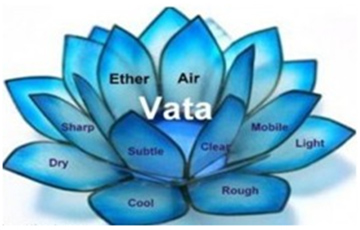Introduction about Ayurveda
Ayurveda is the traditional, ancient Indian system of health science. Its name literally means, “Life knowledge.” The Ayurvedic method of holistic healthcare emphasizes balancing the body, mind, and spirit to treat and prevent disease. This 5,000-year-old practice focuses on harmonizing the body with nature through diet, herbal remedies, yoga and meditation, exercise, lifestyle, and body cleansing. It is considered the sister science of yoga.
History of Ayurveda
Understood to be the oldest and most holistic medical system in the world, Ayurveda was developed around 3,000 BCE. The wisdom of this healing method was passed down through ancient Indian spiritual texts, called the “Vedas.” There are four major Vedas, each of which describes, in some parts, the principles of health, disease, and treatment. One of these texts, the “Rig Veda” (also known as “Rik Veda” or “Rigveda”), is one of the oldest known books of any Indo-European language. The Rig Veda contains philosophical verses on the nature of existence, as well as information on the three basic human constitutions (see “The Doshas” below). It discusses the use of herbs to heal the mind and body, and to keep oneself young. Another Veda, the “Atharva Veda,” contains information on everything from internal medicine and surgery, to infertility and psychiatry. The “physicians” at the time of the Vedas were “rishis” — sages or seers, holy people — who viewed health as an overall integration between mind, body, and spirit. Knowledge of Ayurveda spread from India, influencing other ancient systems, including Chinese medicine and the ancient Greek medicine practiced by Hippocrates. Because of its influence, Ayurveda is known as the “Mother of all healing.”
The Doshas
At the heart of Ayurveda is the principle of “doshas,” which are the metabolic types or bodily humors that make up a person’s constitution. The doshas are the essential forces behind an individual’s physical, mental, and emotional makeup. There are three doshas, “Vata,” “Pitta,” and “Kapha.” According to Ayurveda, everything in the world is composed of five elements: Earth, air, fire, water, and space. These elements combine to form the doshas. Everyone has his or her own particular balance of these elements — everyone has a unique dosha. When your dosha becomes imbalanced, the natural flow of “prana” (Sanskrit for “life force energy”) becomes disrupted. This disruption causes a build-up of toxic waste in the body, mind, and spirit, which creates disease.

Vata
The Vata dosha is a combination of air and space. In general, Vata people are creative, active, and changeable. They’re the ones who are always on the go! They may take on many different activities, but they tire easily and require much sleep. They are typically slim, angular, and long-limbed, with dry skin. They may sometimes forget to eat. Vata people are “idea people,” coming up with many imaginative, unique solutions to problems. However, they may lack the follow-through to successfully realize all of their ventures. A Vata imbalance can result in excess nervous energy, fear, mental confusion, and anxiety. The physical results are gas, constipation, poor circulation, and insomnia.

Pitta
The Pitta dosha is a combination of fire and water. Pitta people are competitive, driven, and perfectionists, traits that can be desired qualities in a teammate! However, they can also become overly aggressive, jealous, and critical. They usually have a medium build with well-defined muscles, and strong, warm hands. They also have hearty, dependable appetites. Because of the fire quality in this dosha, Pitta people tend to have higher body temperatures, and they are very sensitive to direct sunlight and heat. Excessive Pitta can cause anger and overblown tempers. The physical results of Pitta imbalance are ulcers, indigestion, and skin irritations, such as cold sores or acne.

Kapha
The Kapha dosha is a combination of water and earth. Overall, Kapha people are calm, kind, and loving. They’re the ones who are always baking cookies or offering a warm hug. However, their patient natures can also lead to laziness and over-attachment. Though they may learn and move slowly, they have excellent memories and follow-through. Kapha people tend to be big-boned and amply built, with large, soft eyes and cool hands. They love to eat, but they can go for long periods between meals. Imbalances in Kapha can cause withdrawal, depression, and reclusive tendencies. Physically, this can lead to weight gain, lethargy, and excess mucus — resulting in coughs, sinus infections, and other congestion-related disorders
